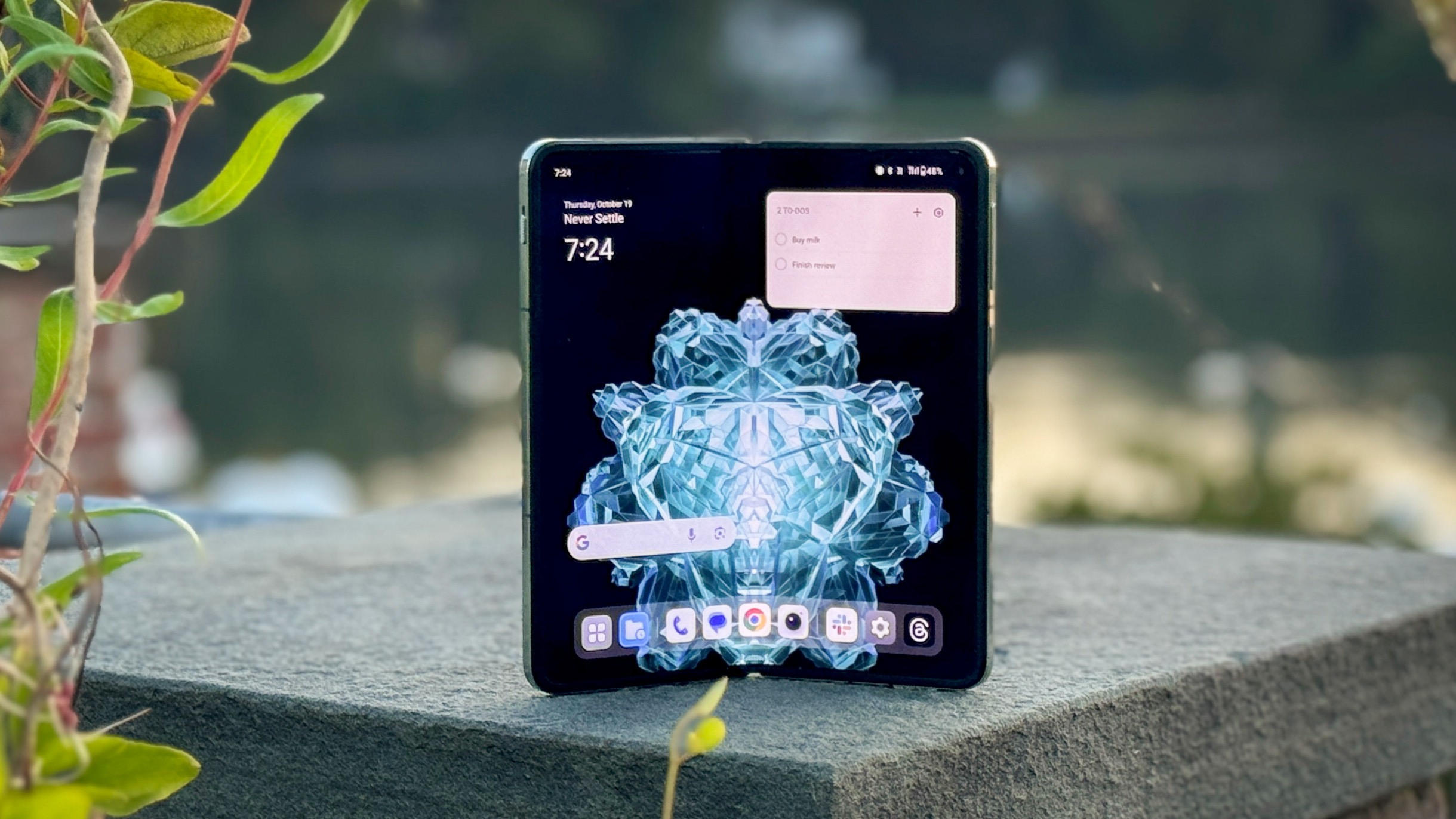
Editor's Note
• Original review date: October, 2023
• Android 14 and new AI features have arrived
• Launch price: $1,699 / £1,599
• Lowest price so far: $1,499.99 / £1,599
Update: April 2024. The OnePlus Open launched around the same time as Android 14, and buyers have had to wait until recently to get the latest OxygenOS14 update with the new Android system on board. The latest update brings some AI photo editing tools to the OnePlus Open, but OnePlus is still bucking the trend and staying away from myriad, useless AI tools on its phones. The price has remained steady since launch, which isn't really disappointing since the persistent $200 trade deal makes this the most affordable foldable phone anyway, and it's still the best foldable tablet phone you can buy.
OnePlus Open: Two-minute review
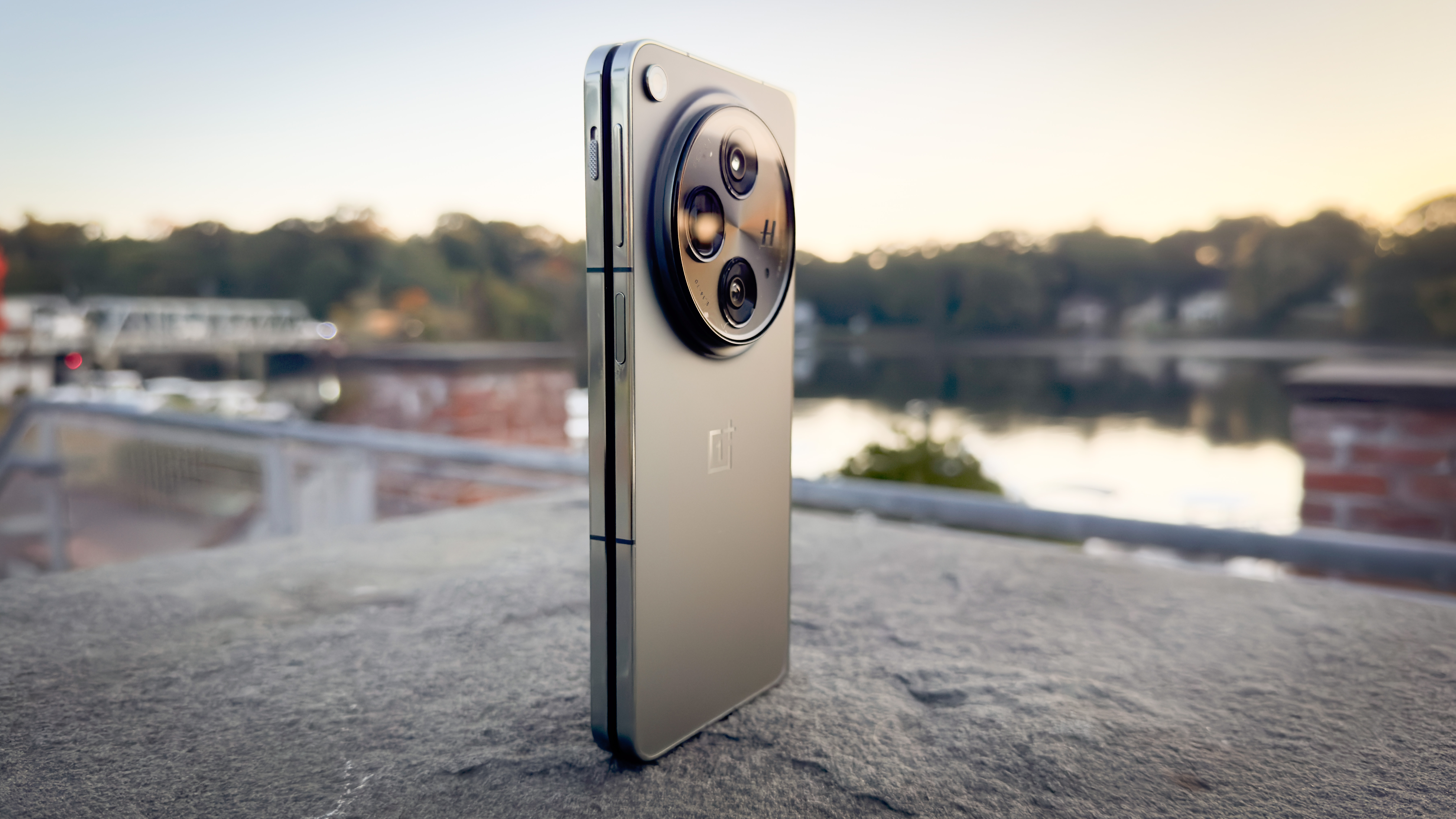
The OnePlus Open is the first tablet foldable phone that feels right. All the ‘Folds’ that came before, the Galaxy Z Fold 5 and the Pixel Fold most recently, feel wrong. They’re shaped funny when closed: the Galaxy is too narrow; the Pixel too squat. The OnePlus Open gets the shape right, and it's the most important improvement OnePlus could have made to the form factor. If you’re paying twice as much for a phone, you shouldn’t feel like it’s the wrong size half the time.
Open the OnePlus Open and you’re greeted with a display that is the biggest, brightest, and most satisfying of all the big foldable phones'. You need to look hard to see the crease, and it’s not even noticeable when you touch it.
Best of all, this phone is easy and inviting to open. The Galaxy can be very stiff at first, and the Pixel Fold never wants to open flat – it requires an awkward second push, and I always felt like I would break my Pixel Fold. The OnePlus Open snaps to attention when I open the hinge.
Compared to other foldable tablets, the OnePlus Open is just better. It's a better size when it's closed. It’s easier to open. In every way, the Open is a better experience, but OnePlus didn’t stop at the folding hinge. It also added something that no other foldable phone maker has dared: really good cameras.
On every other foldable phone, the size limitations of the fold-in-half design has resulted in cameras that range from inferior to downright awful. The OnePlus Open has the best cameras of the bunch, and comes close to being as good as the best flat camera phones, closer than any foldable I've used so far.
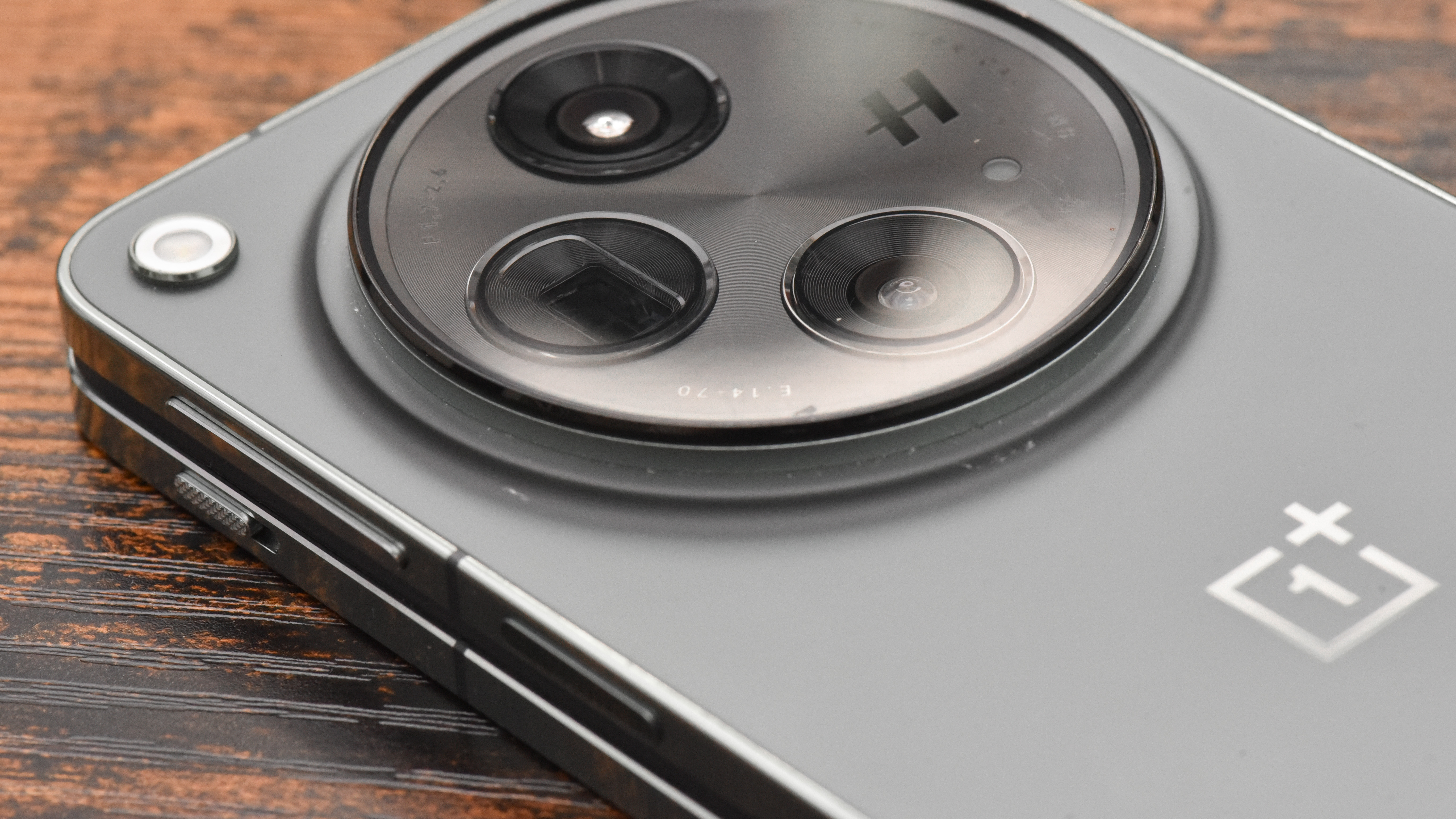
Of course, this requires a gigantic camera hump around back, and it is a mighty bubble, twice as thick as the biggest camera bump you’ve seen. It’s a worthwhile trade off, though, even if it did make the phone feel awkward in my pocket on occasion.
Foldable phones can be so versatile when it comes to camera angles, and it’s a shame that the best foldable phones so far haven’t had cameras to match the capabilities. The OnePlus Open mostly fixes that.
The OnePlus Open is the thinnest foldable phone I’ve seen when it’s closed, and it’s just as thin as the Pixel Fold when open. The OnePlus Open somehow manages to offer larger displays and more battery while remaining lighter than all the rest.
In fact, it’s much lighter than the Pixel, and that makes a huge difference when you're carrying it around. The OnePlus Open is about the same weight as last year’s iPhone 14 Pro Max. Fitting two displays, a larger battery, and the premium camera bump into a package that's the same weight as last year's best iPhone is an impressive achievement. Titanium makes this year’s iPhone 15 Pro Max lighter, but only slightly.
Using the OnePlus Open is a joy, thanks to OnePlus’s simple and elegant software design. This phone isn’t as feature-packed as a Galaxy Z Fold 5, and we’re the better for it. OnePlus has made it easy to create a useful home screen, navigate settings and tools, and open multiple windows simultaneously, without needing lengthy tutorials and pop-up reminders to help you discover hidden features.
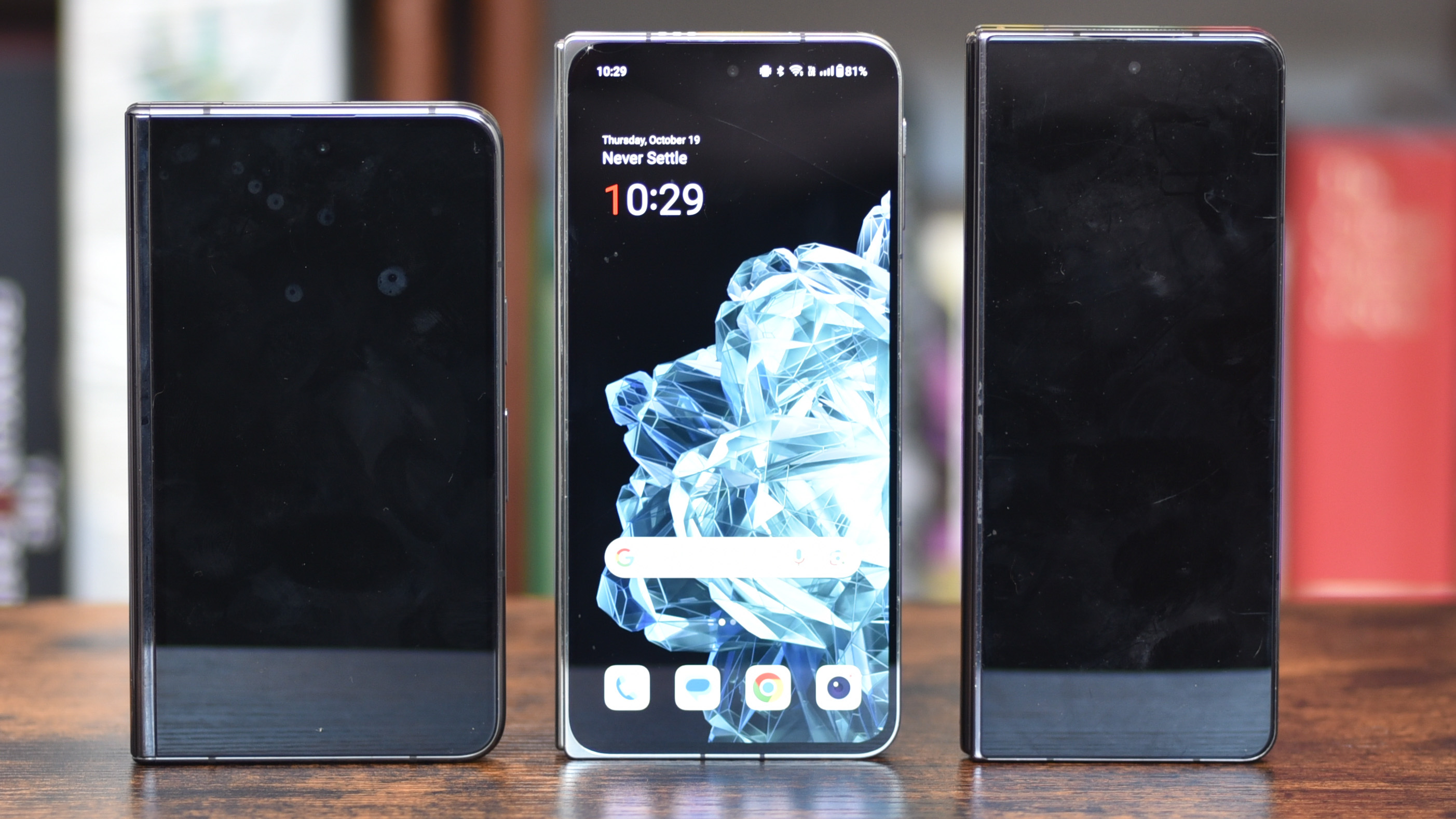
It isn’t all good news. OnePlus doesn’t prioritize water resistance and durability on its phones, and that gives me serious pause in recommending them. The OnePlus Open is only IPX4 rated, which means that dust and lint could be a problem in the future, and the Open can only handle splashes of water; you can’t let it take a real dip in the pool. It can survive 10 straight minutes in light rain, so the news isn’t dire, but I wish OnePlus would offer nothing less than IP67 resistance against all dust and the occasional dunking.
The OnePlus Open comes with a simple bumper-frame case in the box. Our OnePlus reps told me to put the case on the phone, and that isn’t a request that I usually get from most phone makers during a review. I used it occasionally because it was light and unobtrusive, but the phone is much prettier without the case. I mostly took the risk without the bumper, but it's always better to be safe than sorry.
I’m not going back to my flat phone ... after this review is over. I won't stop using this Open
The OnePlus Open costs $1,699 / £1,599, and in the US OnePlus has a trade-in deal that will effectively drop the price by at least $200 for everyone, no matter what phone you trade. This deal will be available throughout the phone's lifespan, according to OnePlus, and that makes the OnePlus Open the most affordable big foldable phone to hit the US market, at least.
It’s still admittedly expensive. OnePlus isn’t selling the OnePlus Open through wireless carriers, which means you won’t be able to sign your life away for a sweet deal on a multi-year contract to get this phone for free.
The phone is certified for all the major carrier networks, it just won't be sold at those stores. You can buy it from OnePlus directly or from a major online retailer in your area, like Amazon and BestBuy in the US.
The OnePlus Open is also the first big foldable that’s really worth it. If you were set on a foldable before, I could recommend the best, but I never wanted to use one myself because of all the compromises. The Open doesn’t just fix the mistakes of every big foldable phone that came before, it also breaks new ground with a larger display and much better cameras. I’m not going back to my flat phone, a Galaxy S23 Ultra, after this review is over. I won't stop using this Open.
OnePlus Open review: Price and availability
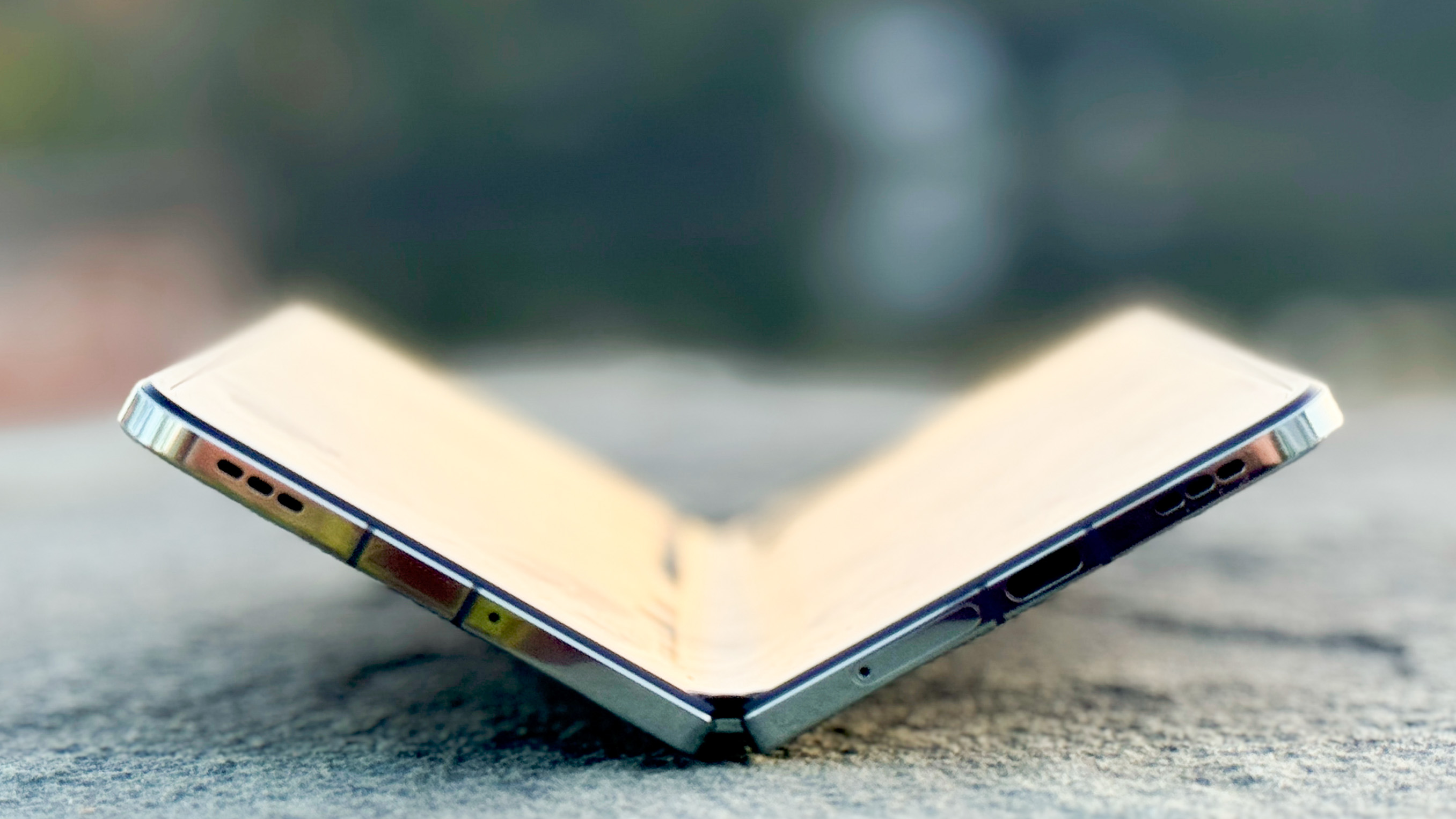
- $1,699 / £1,599 at launch for 512GB / 16GB model
- At least $200 trade-in offer for any phone in any condition in US
- Available from OnePlus, BestBuy and Amazon, but no carriers are selling it
While waiting for OnePlus to tell us the price of this phone, I played a game with fellow tech journalists to guess what it would cost. I guessed $1,499, while my colleagues guessed far too low.
OnePlus is known for shocking the market with bargain pricing on almost-flagship-quality devices, and everybody wants a big foldable phone that costs under $1,000 / £1,000, but these phones still haven’t achieved the volume that will make their fancy folding components affordable. I'm amazed that OnePlus can offer a phone with these features at such a low price, including the trade-in offer.
The price is $1,699 / £1,599 – OnePlus has yet to tell us if or when the Open will be released in Australia – but my guess was still right on the money, because OnePlus says it will offer a deal for the full life of this phone that gives you at least $200 off if you trade in any phone.
That’s any phone in any condition, and I take OnePlus at its word, because it really just wants to hand you a coupon, but offering a discount for a trade feels more high-end. You can get up to $1,000 off with a top trade, although nobody will be trading an iPhone 14 Pro Max for this phone, even if it is the same weight.
In the UK, customers who pre-order the OnePlus One will get a free pair of OnePlus Buds Pro 2, and when it goes on sale buyers will receive discounts on various other OnePlus devices.
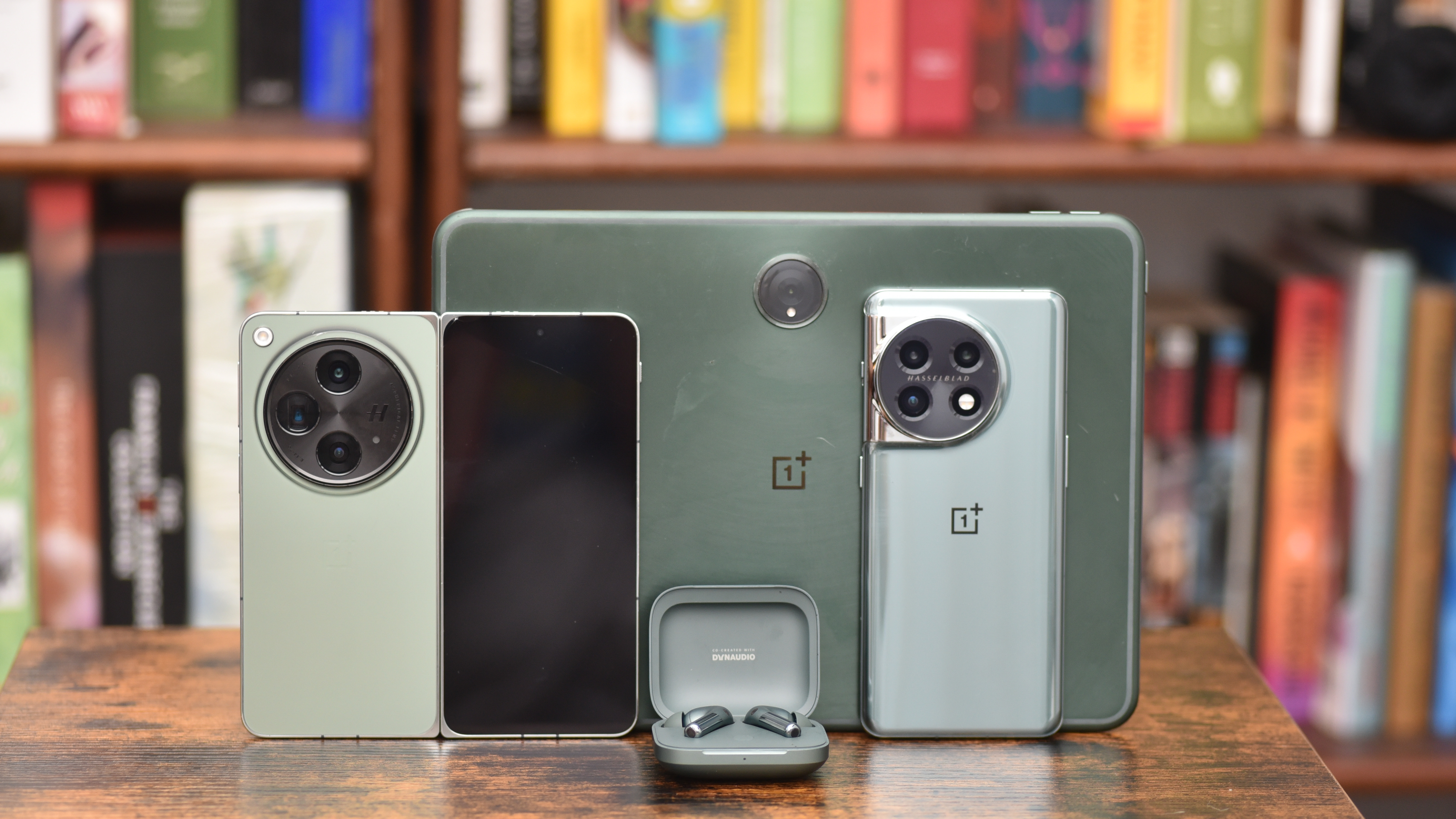
It’s still expensive. You can get two or more OnePlus 11 phones for the same price. Is it worth twice what a normal phone costs? The external display on the OnePlus Open is larger than an iPhone 15's, and the internal display is nearly as big as an iPad mini. It truly delivers on giving you a two-in-one experience, and if you bought both of those Apple devices separately, with the same amount of storage on board, you’d be paying more than you’ll pay for a OnePlus Open.
There's only one storage option for the OnePlus Open: 512GB of storage and 16GB of RAM, making it the top-spec foldable for memory and the best buy for storage. It comes in Emerald Dusk green and Voyager Black, and oddly the two colors result in phones with different weights, because the Voyager Black uses vegan leather on the back (nicely textured plastic) instead of heavier glass.
I like that black finish quite a bit, but I’ve built a collection of green OnePlus products this year, with my OnePlus Pad and OnePlus Buds Pro 2, so I'm glad that my review model is matchy-matchy. In fact, it’s nice to see OnePlus offer consistent colors for fans to collect, especially in this great green hue; even Samsung, with its product synergy, hasn't offered one unique color across all device categories.
- Value score: 4 / 5
OnePlus Open review: Specs
Here are the specs for the OnePlus Open, including the internal and external displays, and all of the cameras:
OnePlus Open review: Design
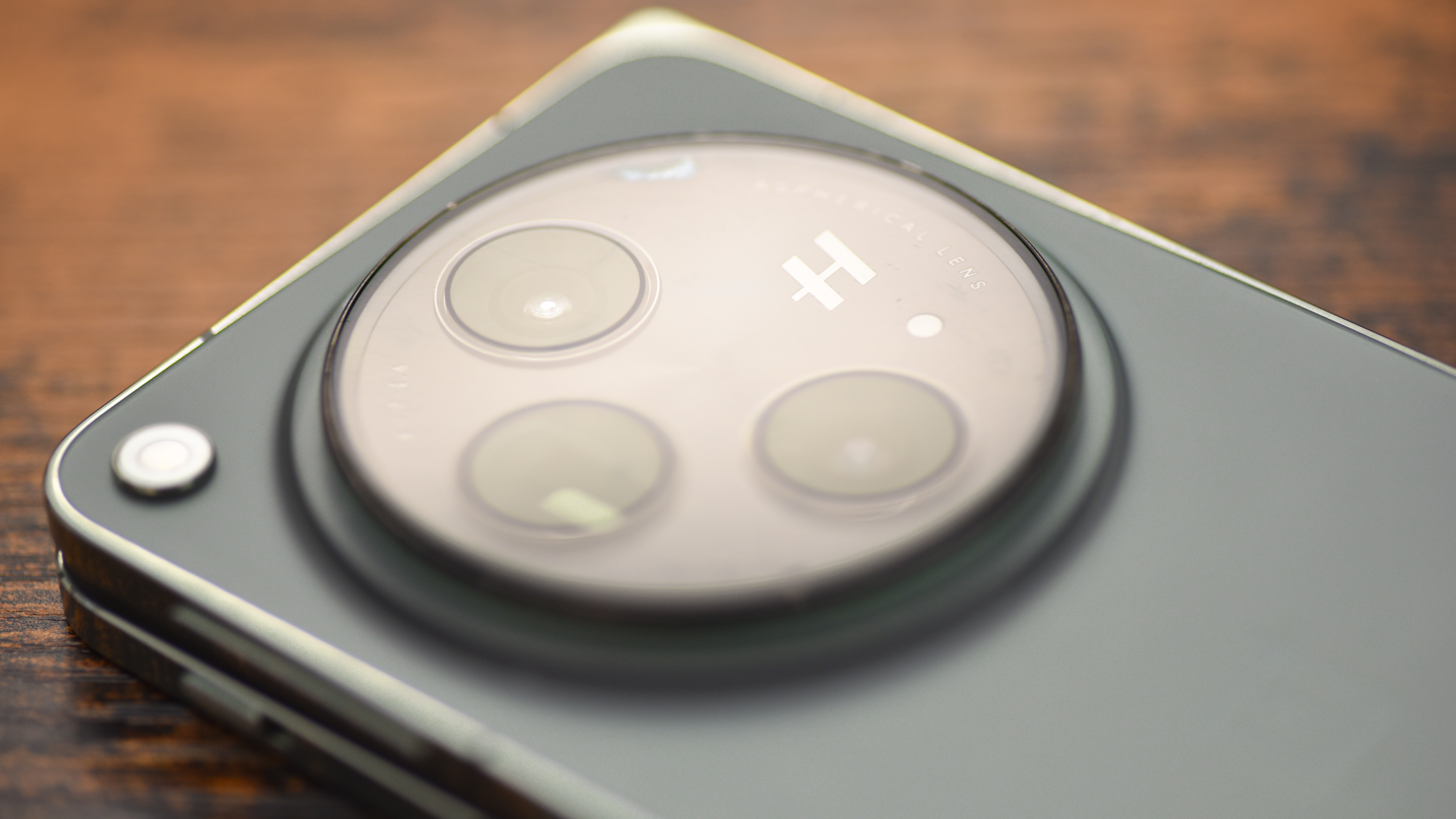
- Thinnest and lightest foldable you can buy (in most markets)
- Larger displays compared to Samsung and Google
- Crease is nearly invisible and barely tactile
What is the ideal size for a tablet foldable? It would be exactly the same size as a normal smartphone when it’s closed, and the same size as a mini tablet when it’s open – and of all the foldable phones I’ve seen, the OnePlus Open comes closest to achieving this ideal.
Most importantly, the aspect ratio of the cover display is almost identical to those of the best phones on the market. An iPhone has a 19.5:9 aspect ratio. The OnePlus Open has a 20:9 aspect ratio. It doesn’t look too thin, like the Samsung Galaxy Z Fold 5, and every other 'Galaxy Fold' Samsung has made, and it doesn’t look too squat and wide like the Pixel Fold. No one would know you were holding a foldable phone if they didn’t see it from the side.
The OnePlus Open is admittedly thick when closed, and I tried to recall the last time I’ve owned a flat phone that was this thick. The iPhone 3GS from 2009 was just as thick as the OnePlus Open, at about 12mm when closed. The iPhone 4 shrank considerably, and that phone sparked the revolution of thin phones with metal frames and glass on the front and back.
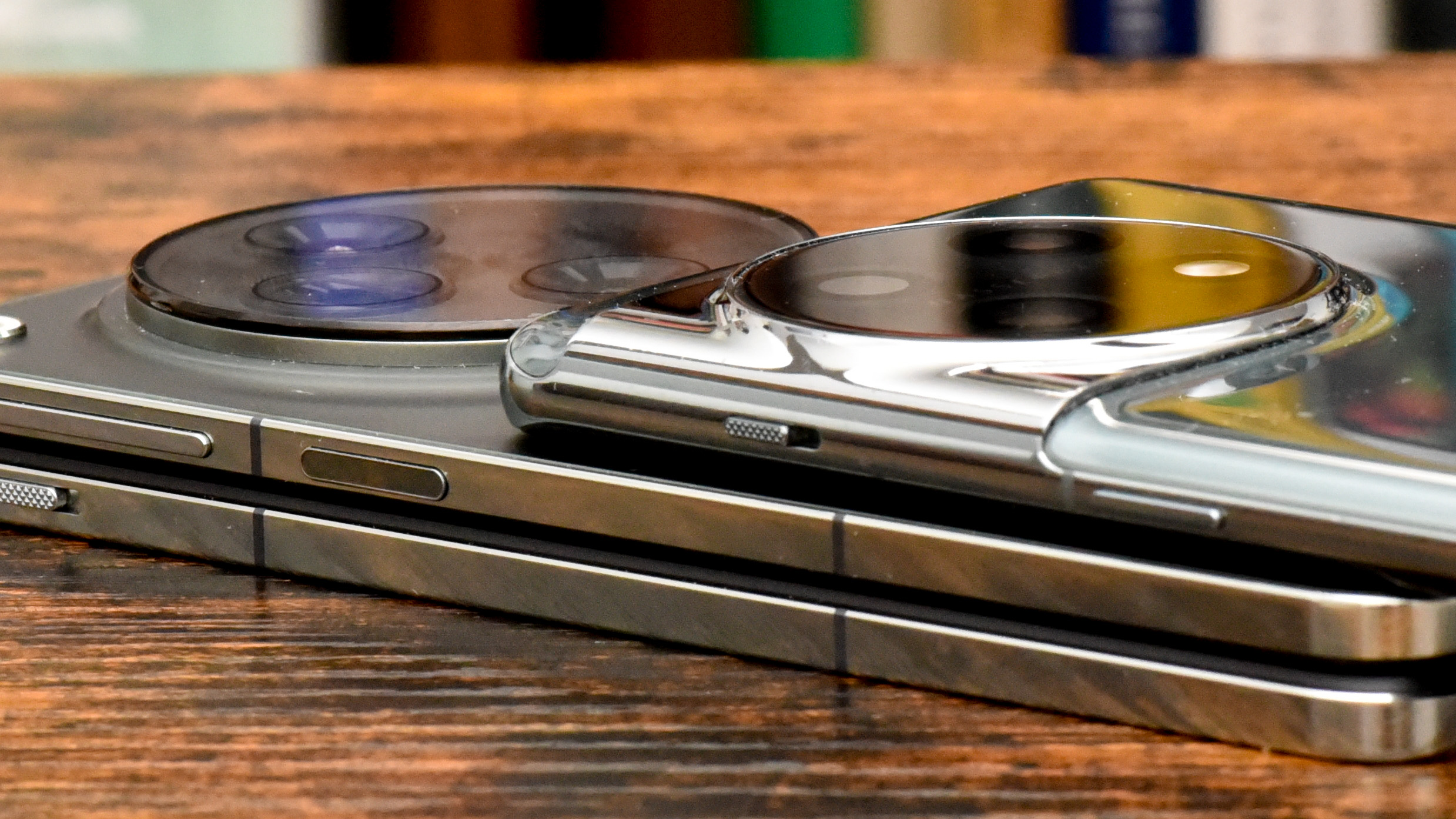
Will foldable phones get thinner than this? The Honor Magic Vs2 is already 1mm thinner than the OnePlus Open, so yes, of course they will. The thickness of the OnePlus Open, especially at its big camera bump, is the foldable’s biggest shortcoming against the best flat phones. But, if you're going to make good use the big internal screen (and you definitely will), the thickness is a fair trade.
That bump, though. If you think you’ve seen a big camera bump before, get ready. The camera circle on the OnePlus 11 is prominent, though not unattractive. The camera mound on the OnePlus Open is more of a hillock, with no sweeping, k-shaped metal to round out the design. It floats near the top of the back like a giant, glaring eye.
Also, I could definitely feel it in my pocket, and I preferred to wear the phone lens-side out from my butt. It’s not a huge problem; it’s just a huge camera bump. To get premium cameras on a foldable phone, especially compared to the sub-par cameras we’ve seen on past foldables that cost a lot more than the Open, I’ll accept the bump.
When you open the Open you see a fantastic internal display. There is a crease, but it's barely visible – I often had to tilt the phone for the light to catch the crease properly to show it to onlookers. If you run your finger back and forth over the crease slowly, you can’t feel it, but if you flick quickly you can perceive the slight dip.
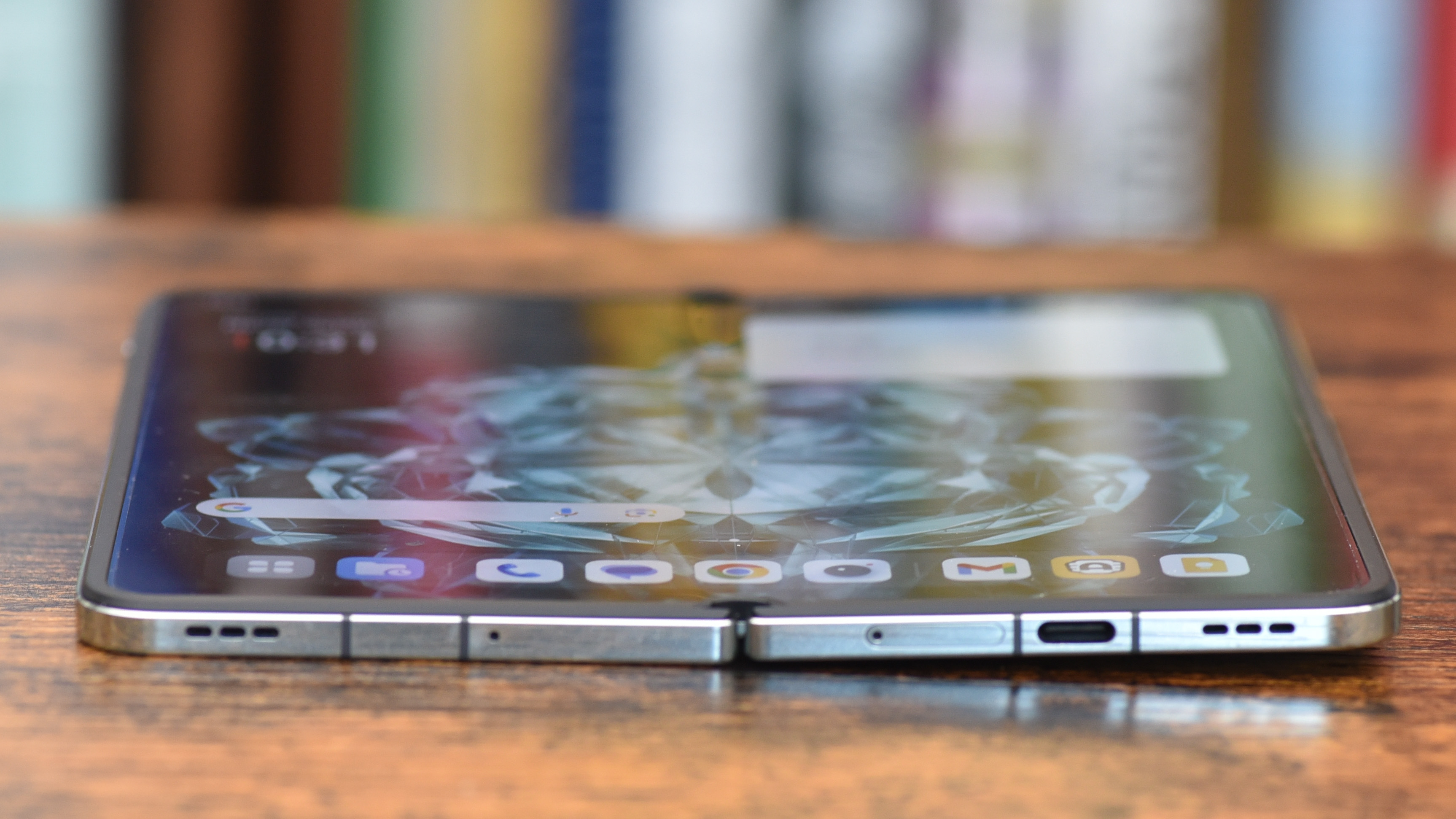
The hinge on the OnePlus Open is satisfying and eager. The Galaxy Z Fold 5 is a bit stiff and takes some effort to open, while the Pixel Fold is a total disaster: the hinge opens most of the way, but you need to give an extra push to force the phone flat. It’s very off-putting.
The OnePlus Open, on the other hand, feels like it wants to be open just as much as it wants to be closed. There's no barrier keeping you from using the phone however you’d like, unlike those other large foldable phones.
The fingerprint scanner on the OnePlus Open is on the power button, and OnePlus uses great fingerprint tech, so it worked well every time I used it. The phone also has a good face unlock, and that’s usually how I unlocked the phone.
There's also a three-stop mute switch on the OnePlus Open, a standard on almost all OnePlus flagship phones (and a now-abandoned feature on the iPhone Pro models). You can go from full mute to vibrate to sound-on with a quick flick. If you’re someone who finds themselves in theaters and meetings often, a mute switch is a great feature to have.
The two color options are both worth considering. The black ‘vegan’ leather (aka plastic) is actually very nicely textured and looks classy. My review unit in green fits in splendidly with all the other green OnePlus gear I’ve been happily collecting this year. The company has had a banner year, and every flagship product it’s launched is worth a look.
- Design score: 5 / 5
OnePlus Open review: Display
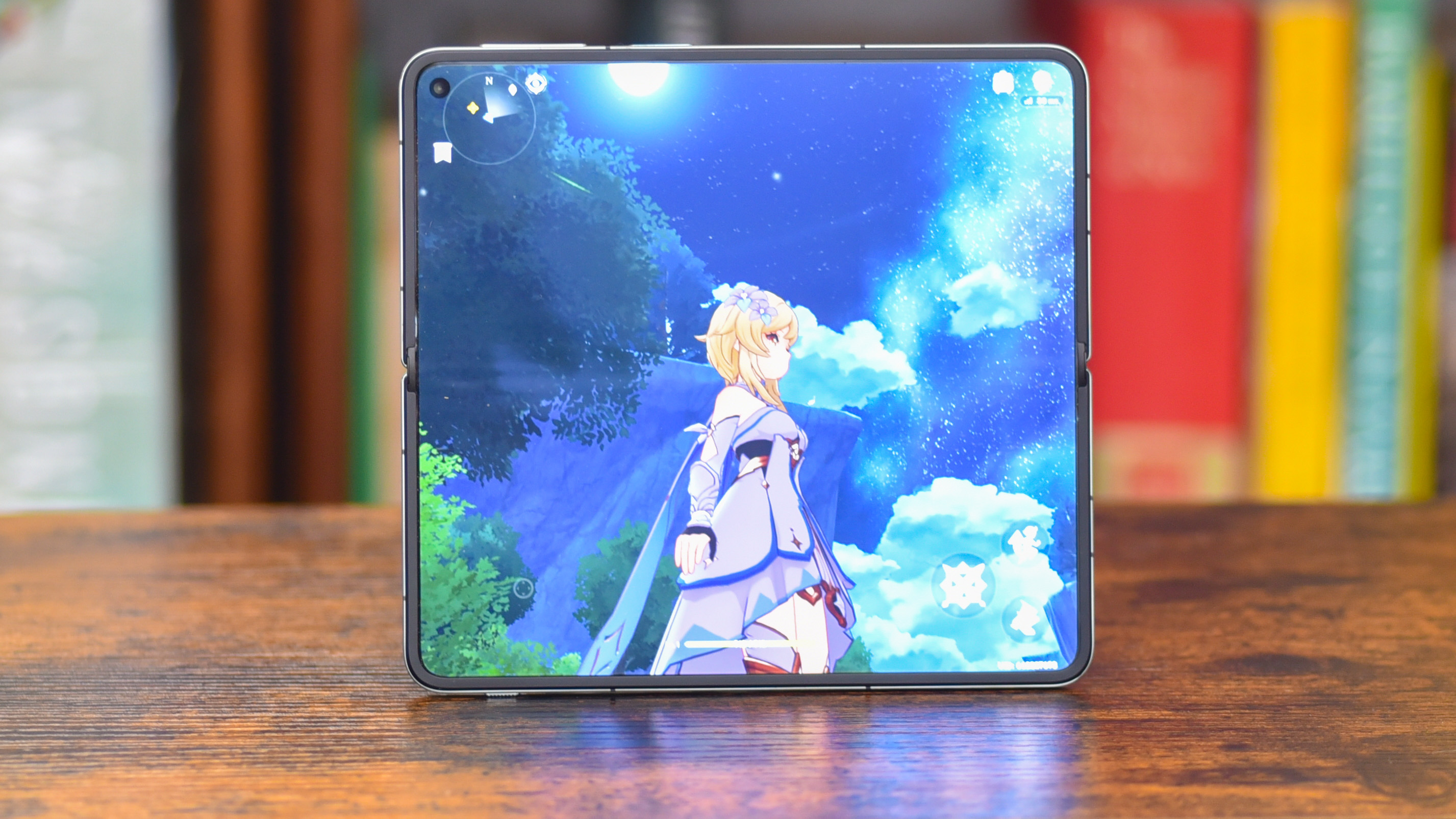
- 6.3-inch cover display is larger than the iPhone 15's
- 7.82-inch inner display is a half-inch smaller than an iPad mini
- Both screens are super-bright, with variable refresh to 120Hz
The two displays on the OnePlus Open are a marvel to behold, and both of them are just as good as the flagship phone or tablet they’ll replace in your collection. The cover display is 6.3 inches, with LTPO 3.0 technology that can slow down to 10Hz for a low-power, always-on mode. The inner display is a huge 7.82-inch screen that has almost the same screen area as an iPad Mini (2021). It can slow down to 1Hz, and both screens can refresh up to 120Hz.
Just as it did with the OnePlus Pad, the company continues to find the best displays for its devices, with superior brightness levels that trounce the competition. The Pixel Fold can reach peak brightness levels of 1,450 nits, for when the sun is shining directly on it. The OnePlus Open, on the other hand, can easily hit the same brightness in normal use, and peaks at a brilliant 2,800 nits. Even Google’s impressively bright new Pixel 8 Pro can only peak at 2,400 nits.
In terms of screen area, you really are getting more with the OnePlus Open than you would with the Pixel Fold or Galaxy Z Fold 5. The competitor phones may advertise a 7.6-inch screen, which doesn’t sound like it’s much smaller, but that’s a diagonal measurement, and the diagonal doesn’t tell us anything useful about screen size.
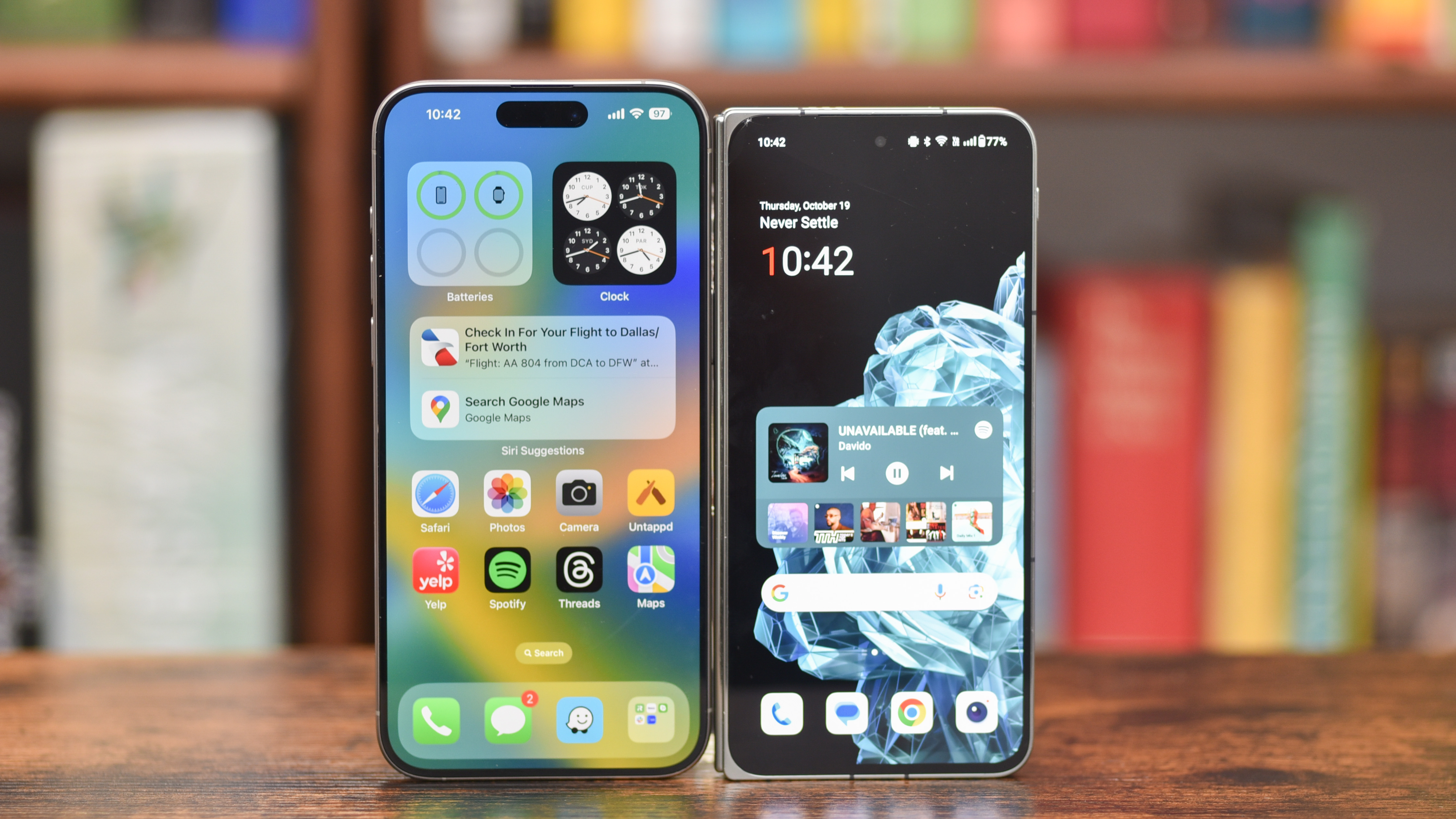
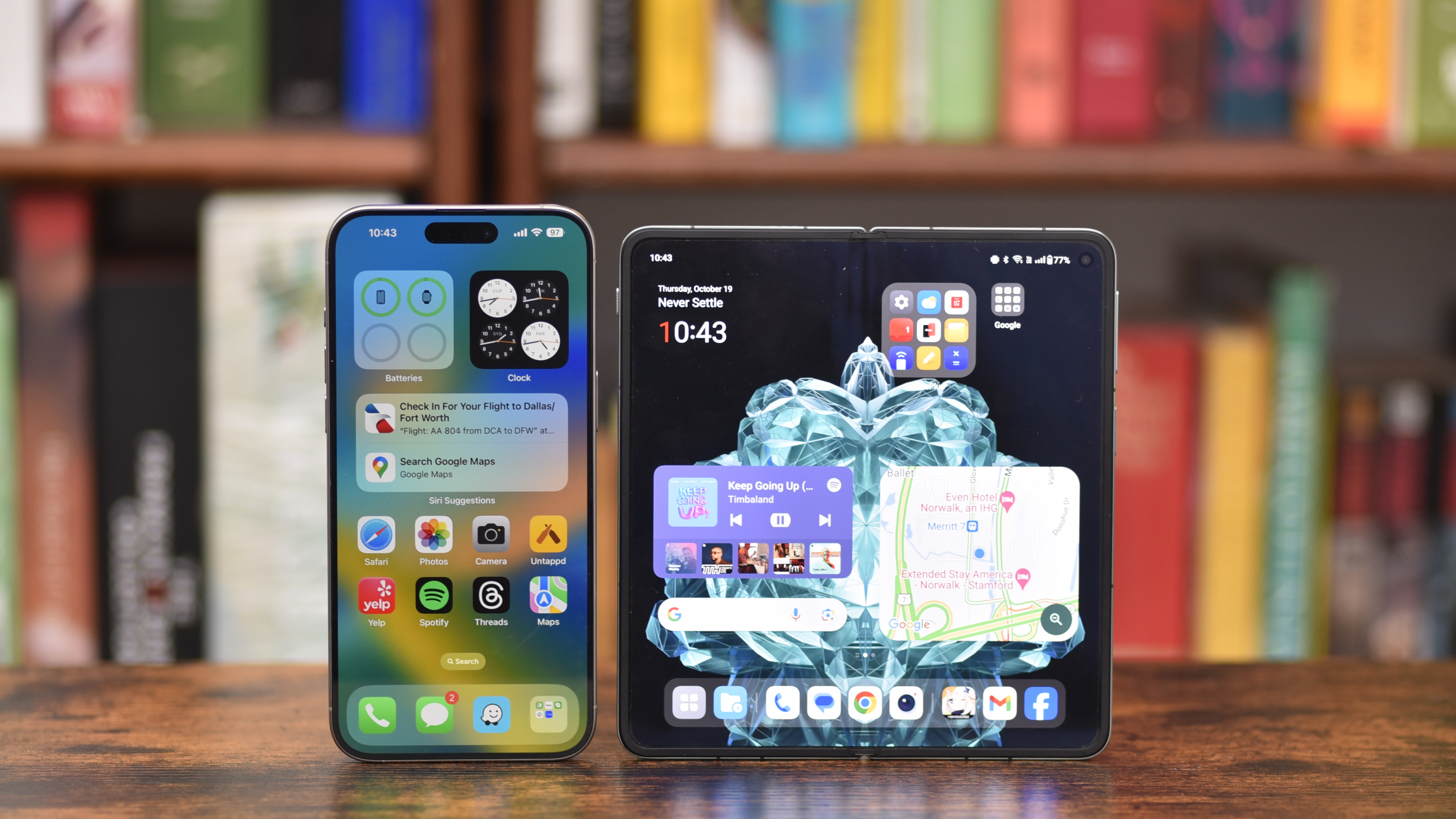
The Pixel Fold and Galaxy Z Fold 5 actually give you around 28.4 square inches of screen real estate inside. The OnePlus Open gives you 30.4 square inches. That’s two square inches more, not just 0.22-inches measuring the diagonal. Does it feel like a lot? Not really; those other phones already felt big. Combined with the much better external display, though, the extra space on the OnePlus Open's inner screen feels like a nice bonus.
The external display on the OnePlus Open is the biggest difference, even though the diagonal measurement tells a misleading story. Samsung’s Galaxy Z Fold 5 has a 6.2-inch external display, but it’s very tall and narrow, and it’s not much fun to use. The OnePlus Open has a 6.31-inch external display, so is it really much bigger? Oh yeah, it’s much bigger.
The iPhone 15 display gives you around 14.15 inches of screen space in square inches. The OnePlus Open’s external display is even bigger, giving you 14.9 square inches. The Galaxy Z Fold 5? That's almost two square inches smaller than the OnePlus, and more than an inch less space than the iPhone 15. Samsung’s most expensive phone doesn’t even give you as much external screen space as Apple’s base model iPhone, unless you unfold the Galaxy.
- Display score: 5 / 5
OnePlus Open review: Software
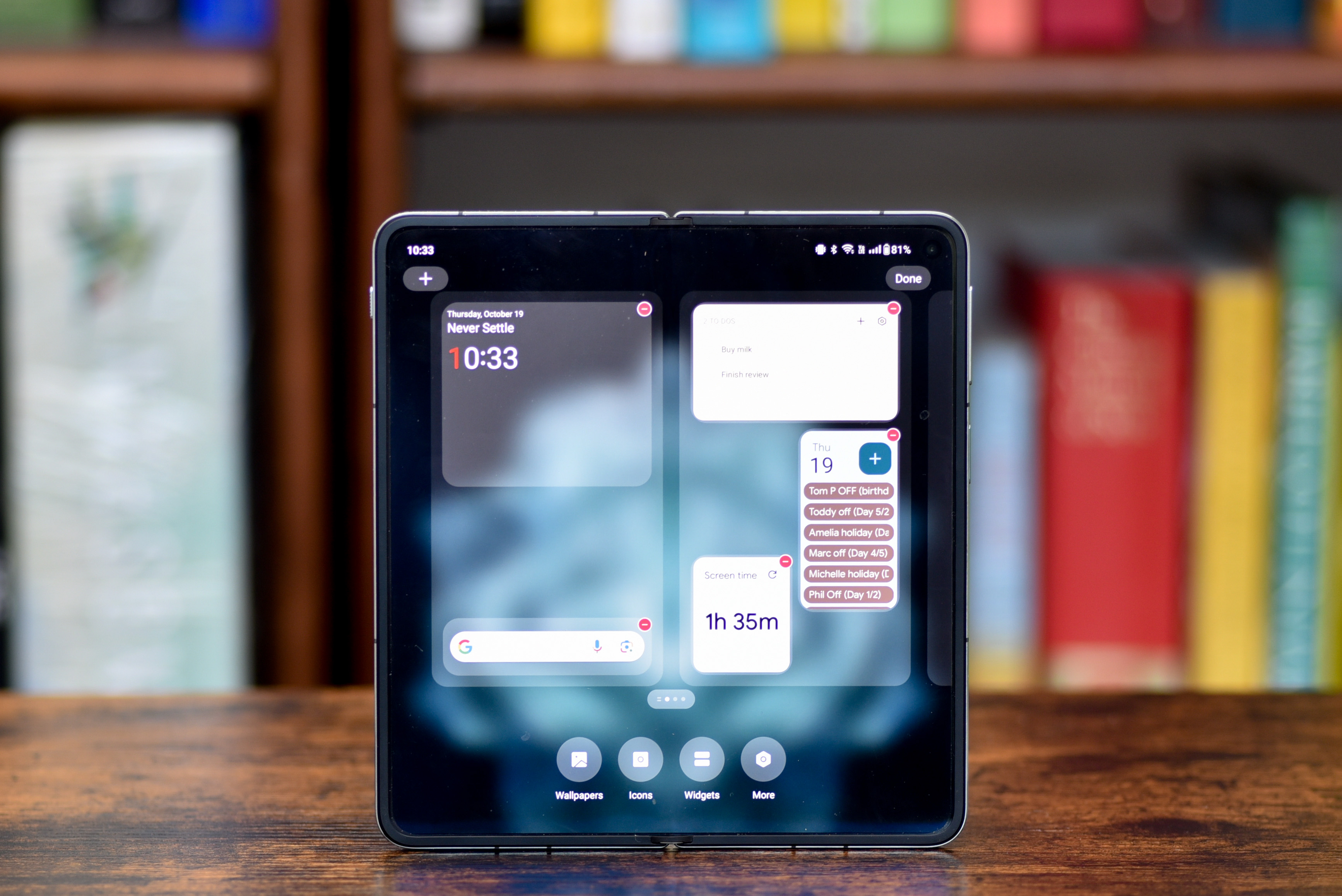
- Elegant interface doesn’t get in the way
- Not feature-packed like Samsung, for better and for worse
- Nice synergy with OnePlus Pad
The OnePlus Oxygen OS interface on the OnePlus Open is clean and elegant, closer to Google’s Pixel version of Android than Samsung’s One UI interface. If that doesn’t mean much to you, just know that it’s easy to set up and use the Open, and there are no unexpected glitches or unforced errors.
For instance, you can start an app with the phone closed and then open the phone, and it's no problem for the OnePlus Open. On the Pixel Fold, this often causes problems, but on the Open it just works; in fact, apps look great on both the smaller and larger displays, unlike the Pixel, which has trouble displaying apps properly.
On the other hand, Samsung fans hold a shotgun of features ready to blast at any competitor, and a few of these can be undeniably useful. You can’t turn the OnePlus Open into a desktop computer like you can with Samsung’s DeX software. You won’t have a second virtual assistant like Bixby ready to manage all of your phone settings. You can’t use a precise pen on the Open’s display. I could go on and on.
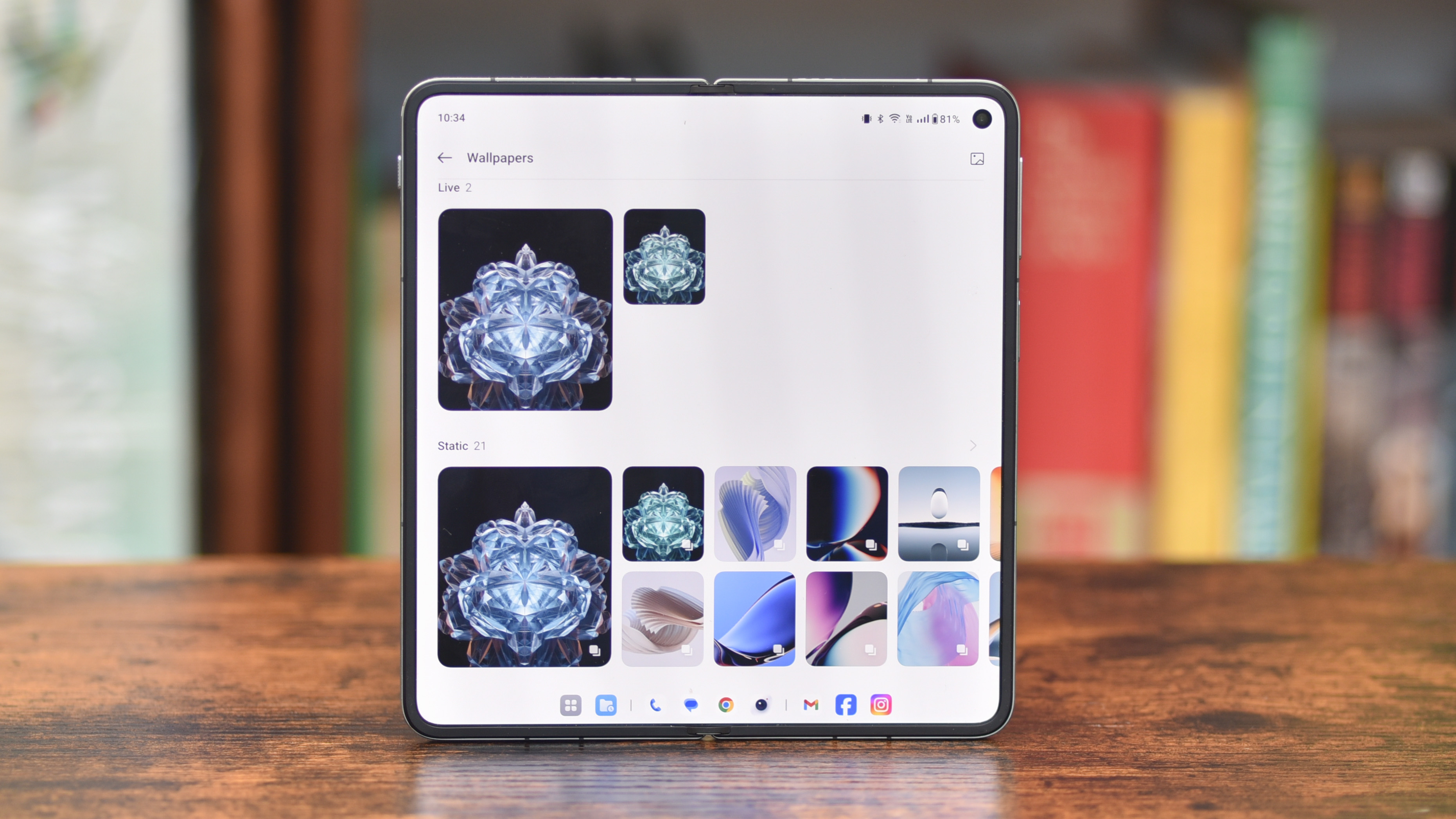
That said, there’s nothing missing here. Everything you’d expect to find on a good tablet foldable is here. You can run apps side-by-side easily by swiping at the edges of the screen. You can have apps in smaller pop-up windows on top of larger apps.
It’s very unfussy and easy to manage. The OnePlus Open isn’t quite as feature-packed as the Galaxy Z Fold 5, but you also don’t get endless layers of menus and options accompanying each feature.
OnePlus also deserves credit for building out its own product ecosystem, and since the OnePlus Pad is actually an excellent tablet, I should mention that it has special features that work with other OnePlus phones like the OnePlus Open. The devices will automatically connect and start sharing things like photos or anything you copy or cut into the clipboard. Copy an image on one device and it immediately appears on the other. Samsung and Apple have similar features, more advanced even, and it’s always nice to see a mobile maker reward its fans.
- Software score: 4 / 5
OnePlus Open review: Cameras
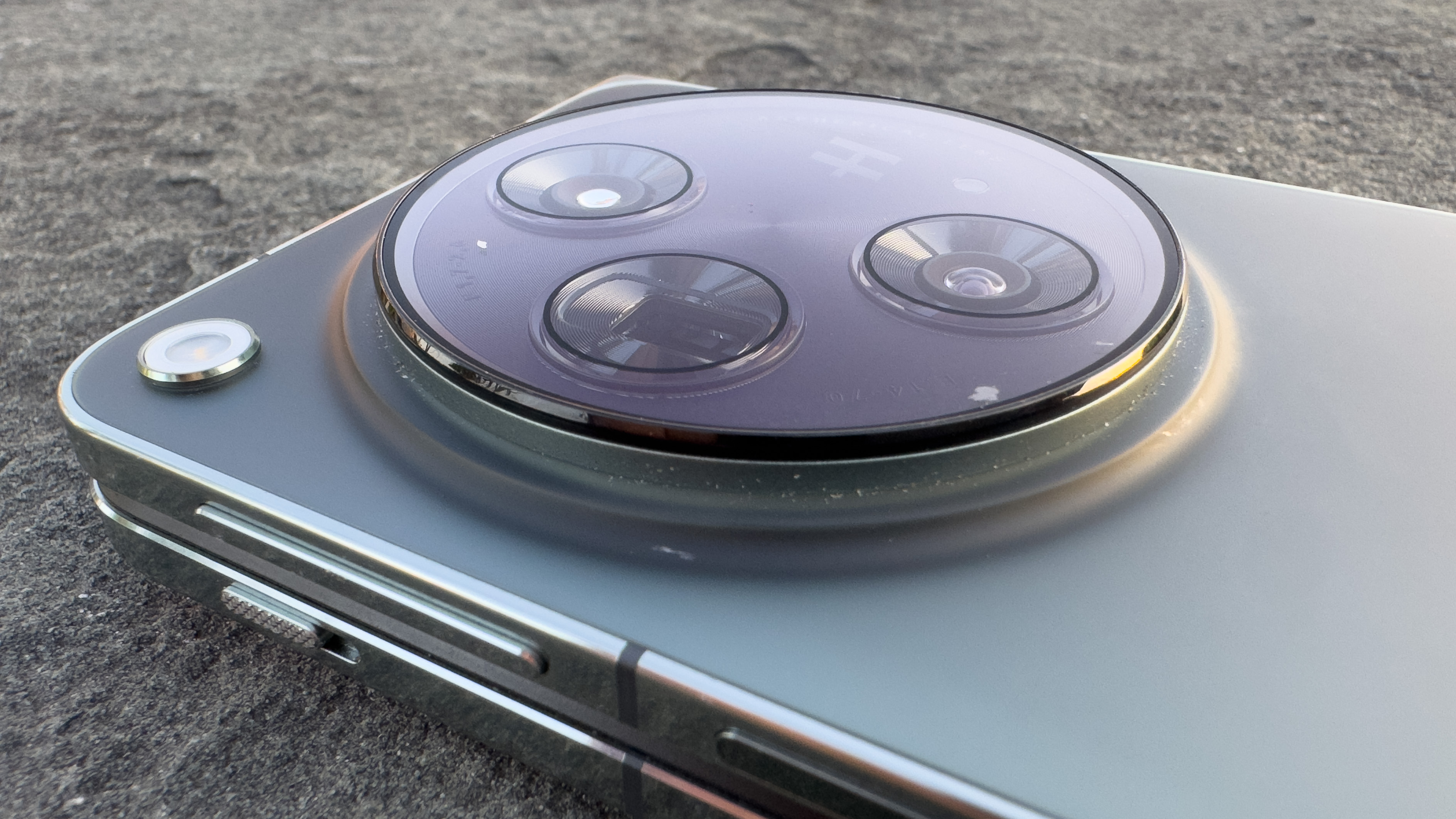
- Excellent cameras beat all other foldable phones
- Not quite as good as the iPhone 15 Pro Max, but close
- Image quality is good, but the camera software needs help
It’s hard to stick a good camera into a foldable phone. A foldable phone has less depth to accommodate the camera, and cameras need depth in their design in order to take great photos. OnePlus is using a new type of stacked sensor from Sony, and on paper it looks set to match or beat the OnePlus 11, which is a very good camera phone for taking cool and artsy photos.
Have I mentioned that the camera bump is big? I have? I'll move on, then. There are a lot of shooting modes on the OnePlus Open, maybe too many. I’m not sure that most folks will understand all the different options offered by Long Exposure, Slo-Mo, and Time-Lapse, let alone the more enigmatic XPAN and Movie modes, which are separate from basic Video.
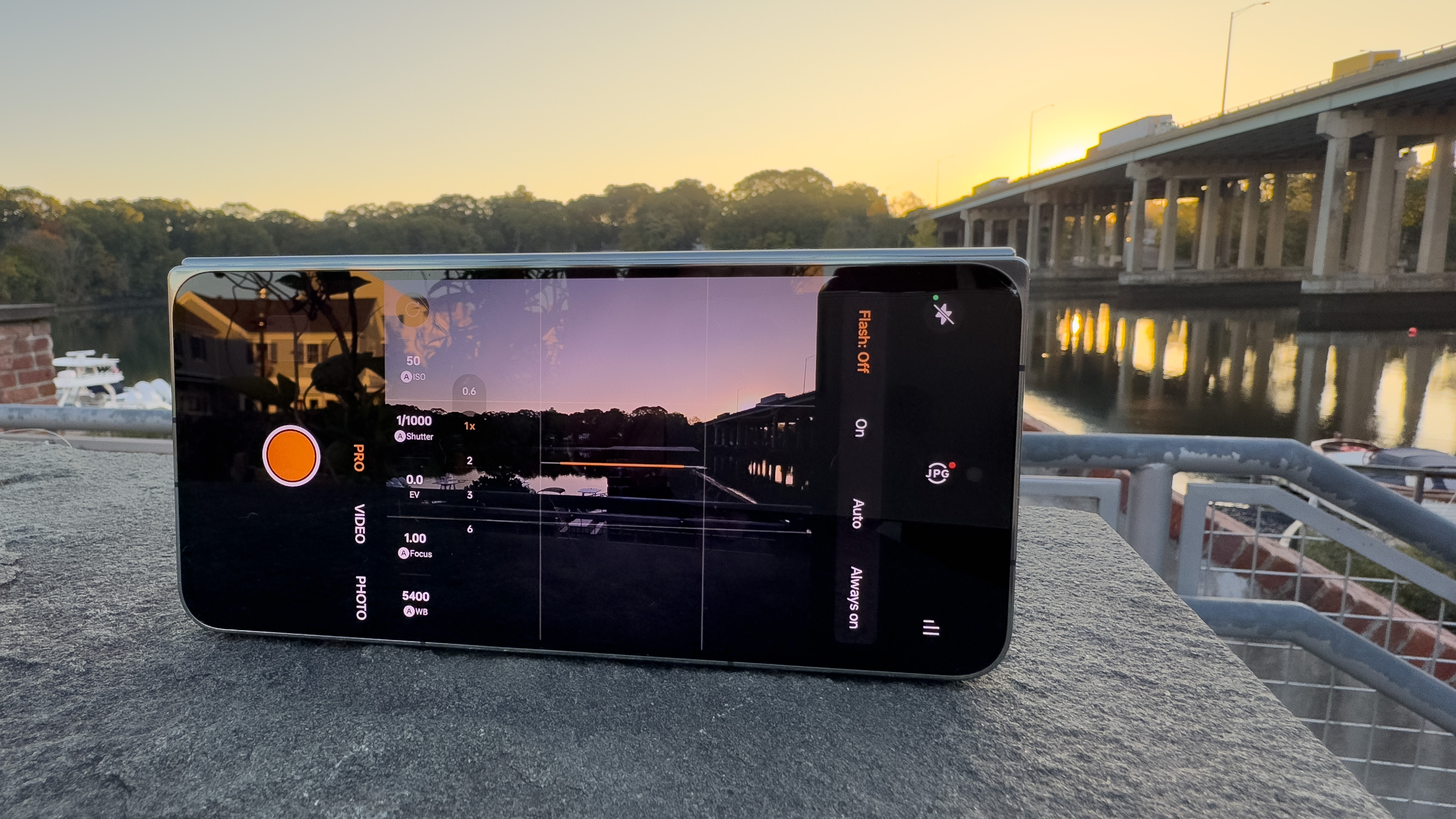
There’s also an Action mode that's separated from the other camera modes, and I’m not sure what it does, because I don’t see enough action to use it. Sometimes, a small circular button like a waning crescent moon would pop up on screen, and I could activate or deactivate some feature by tapping it, but I was never sure what effect it actually had.
A dive into the settings doesn’t help much. There aren’t tutorials for all of the features, and you don’t get all the settings you might expect. I couldn’t manually adjust the resolution of my photos, for instance, aside from choosing to use a 10-bit color mode that stores photos in a different format to save space. Does that count? I’m not really sure.

I also wish the OnePlus Open did a lot more to take advantage of its foldable design, photography-wise. You can swap the viewfinder to the smaller display while the phone is unfolded, and this way you can see yourself on the display while you take a selfie with the higher-quality main camera, instead of the 20MP selfie camera.
On a clamshell foldable like the Motorola Razr Ultra, you’ll find a lot more tricks to make this experience fun when you use the camera with crowds. You’ll find funny faces on the external display that make kids smile, or cool angles you can set up with the camera. That isn’t the case on the OnePlus Open. You get a much better camera than on other foldables, but it doesn’t benefit from being a foldable camera phone as much as I’d like.
OnePlus Open camera samples

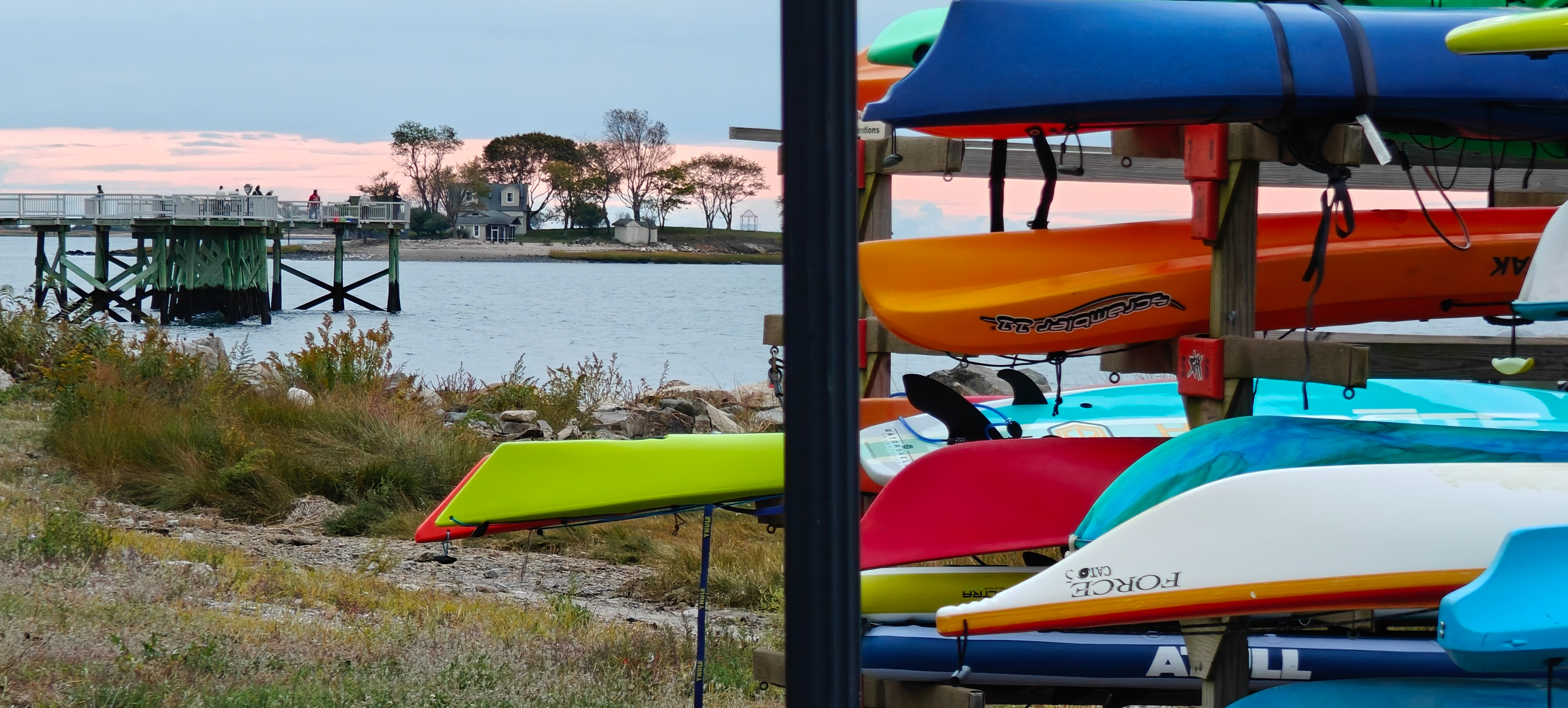

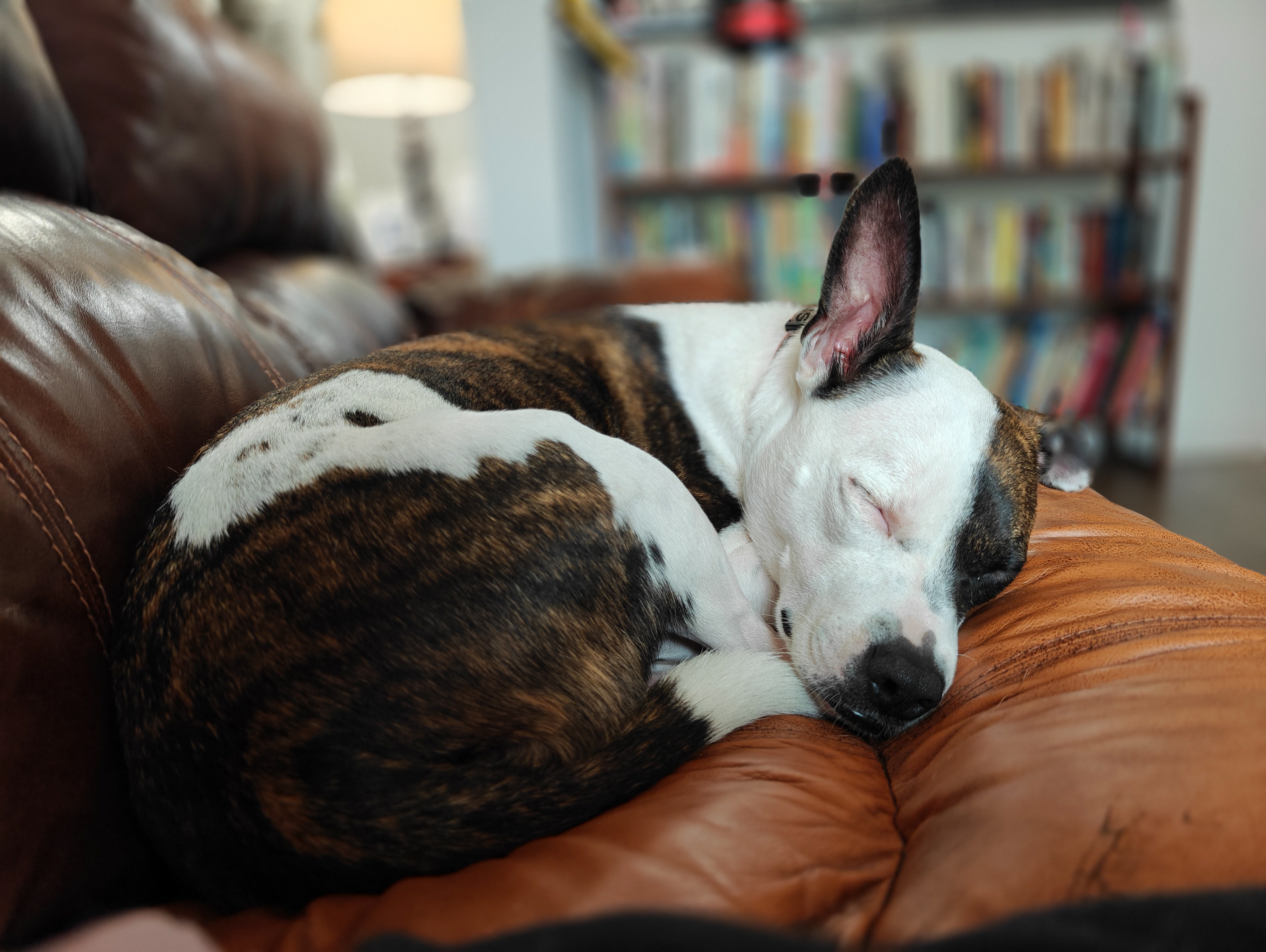










In this sample, the iPhone 15 Pro Max gave me disappointing color results compared to the OnePlus Open. The flag is supposed to be red, white, and blue, not orange.
Here is the 5X zoom on the iPhone 15 Pro Max and the enhanced 6X digital zoom on the OnePlus Open. The iPhone gives you more details, but also more noise. The OnePlus effect is pleasant, but it can cause problems, as you'll see.
Here's an extreme close-up at the edge of zoom range for the iPhone 15 Pro Max and the OnePlus Open. As you can see, both photos are terrible in their own way. The iPhone looks like a grainy photo, though, while the OnePlus made a pretty painting.
- Camera score: 4 / 5
OnePlus Open review: Performance
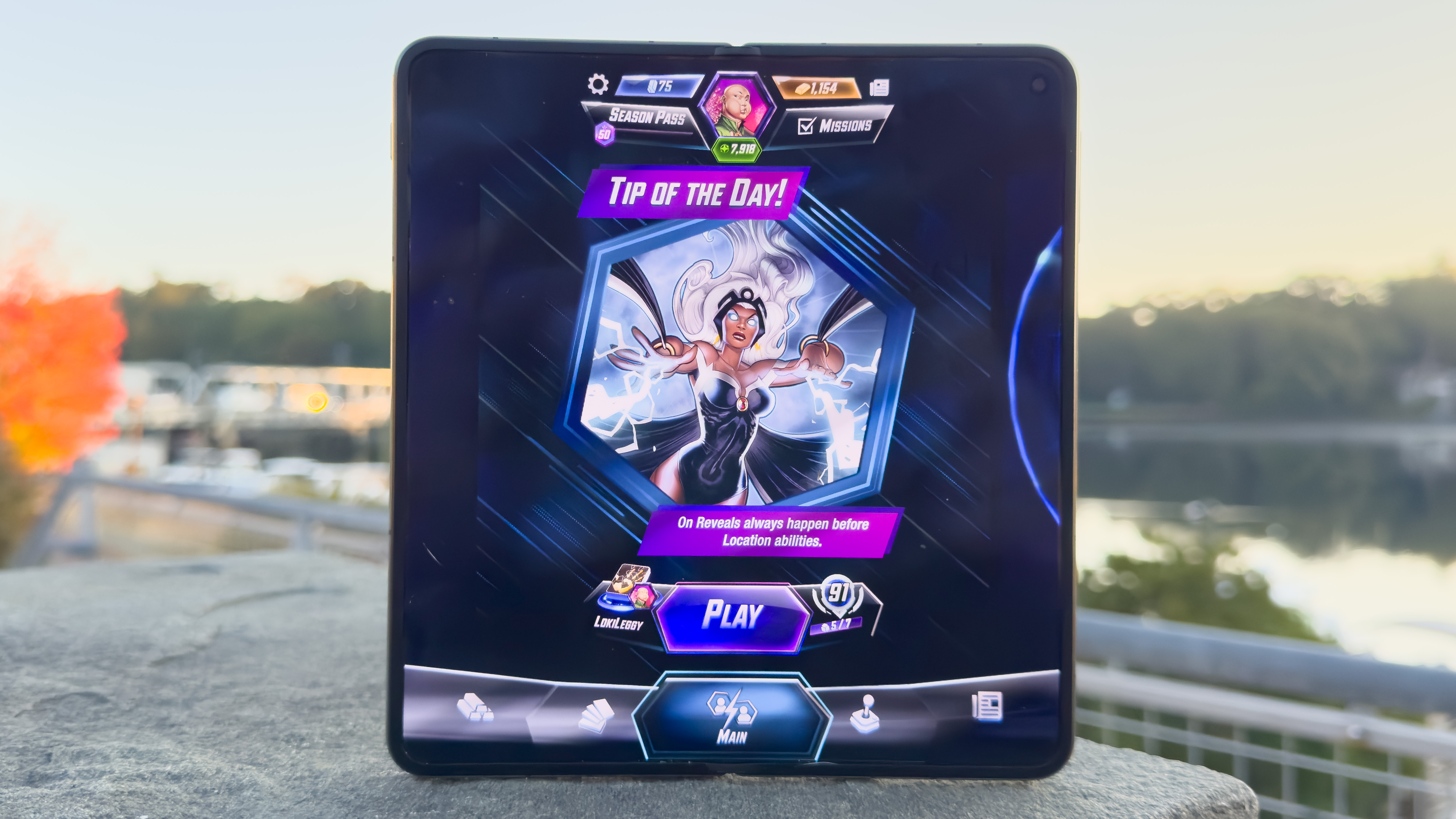
- Speedy performance matches the best Androids
- Still can’t beat the iPhone 15
- Phone ran smoothly but games stuttered
The OnePlus Open uses the Qualcomm Snapdragon 8 Gen 2 chip, making it the last major phone this year to launch with Qualcomm’s best Snapdragon. There’s equilibrium to that, as the OnePlus 11 was the first phone to launch with this chipset, even before the Galaxy S23 series earlier this year. OnePlus has bookended its year with the same Snapdragon.
Of course, that means its performance won’t reign as champ for long, and Qualcomm has its Snapdragon summit coming up, at which a new chip is expected. The OnePlus Open is certainly fast, but it isn’t the fastest phone around, and faster phones are coming.
Running the interface was nice and smooth, even on the transitions between the internal and external display. Whether I was switching screens while using an app to get a better view, or changing viewfinders on the camera so I could take a better selfie, there was never a hitch swapping views on the OnePlus Open.
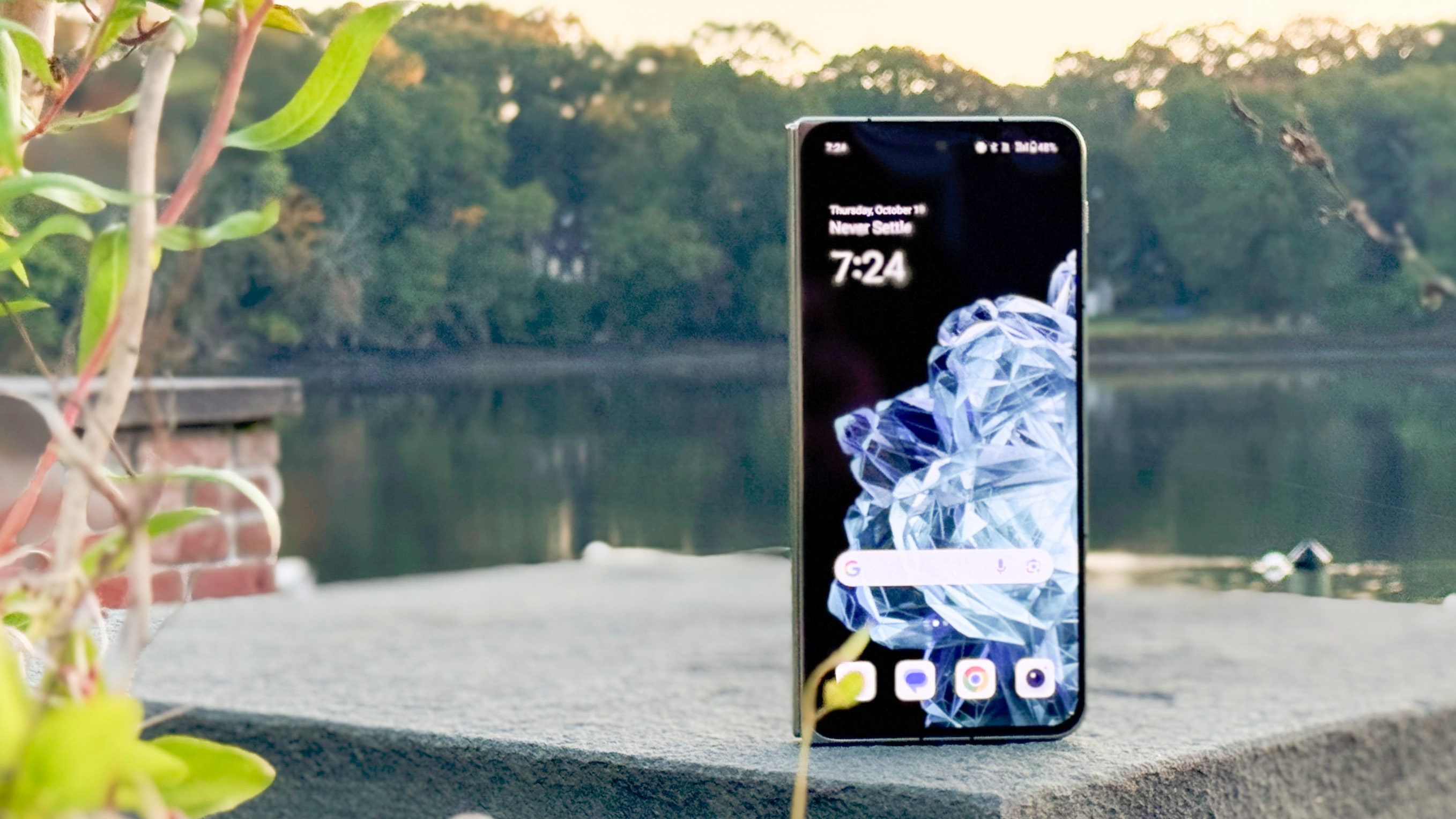
When I tried playing the most graphically intensive titles, the phone did stumble a bit compared to the best-performing Android phones on the market, like the Galaxy S23 Ultra. I never lost because of bad performance, but I saw some jumps and starts, especially on load screens. I have no complaints, but it’s fair to expect more.
The iPhone 15 gives you more performance, because Apple’s chips are much more powerful than the current Snapdragon generation. That means even the iPad mini, with its older A15 Bionic chip, is as fast as the Snapdragon 8 Gen 2. If you’re thinking of buying the OnePlus Open to replace an iPhone plus an iPad mini, you’re getting better performance from Apple’s devices.
Performance impact aside, I still reached for the OnePlus Open to play games over any other phone I had on hand. Playing on the big internal display is delightful, and adds a new level of immersion to mobile games. The most graphically intensive games, like Genshin Impact, could run without much trouble on the OnePlus Open, and having the much larger display made it easier to control my character and read the tiny text on screen.
- Performance score: 4 / 5
OnePlus Open review: Battery life
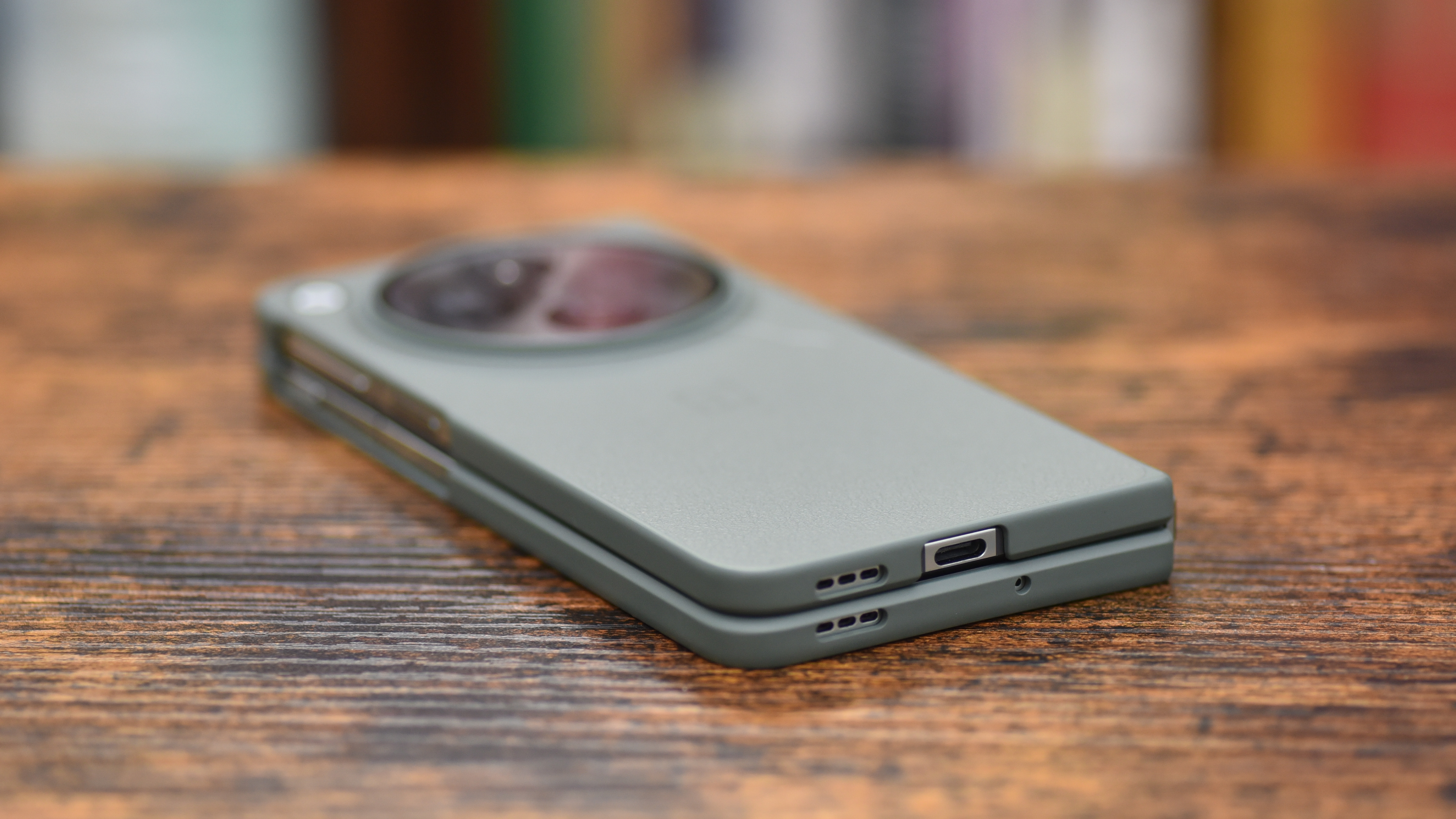
- Battery life is better than most foldables, still not the best
- Fast charging speeds are great if you need them
- This is the only compromise left
The OnePlus Open could last through a full day if I was judicious with my usage. If I opened the big screen and played a lot of battery-hogging mobile games, then of course I drained the battery faster. OnePlus has some innovative ways to add more power, but there’s only so much it can do without making the device much larger.
Normally, a flagship smartphone this size would come with a battery around 5,000mAh, but the OnePlus Open uses two cells that add up to 4,805mAh, so a bit smaller. Having two batteries doesn’t just help with the foldable design; it also allows the phone to use OnePlus’s faster SUPERVOOC charging, with speeds up to 67 watts.
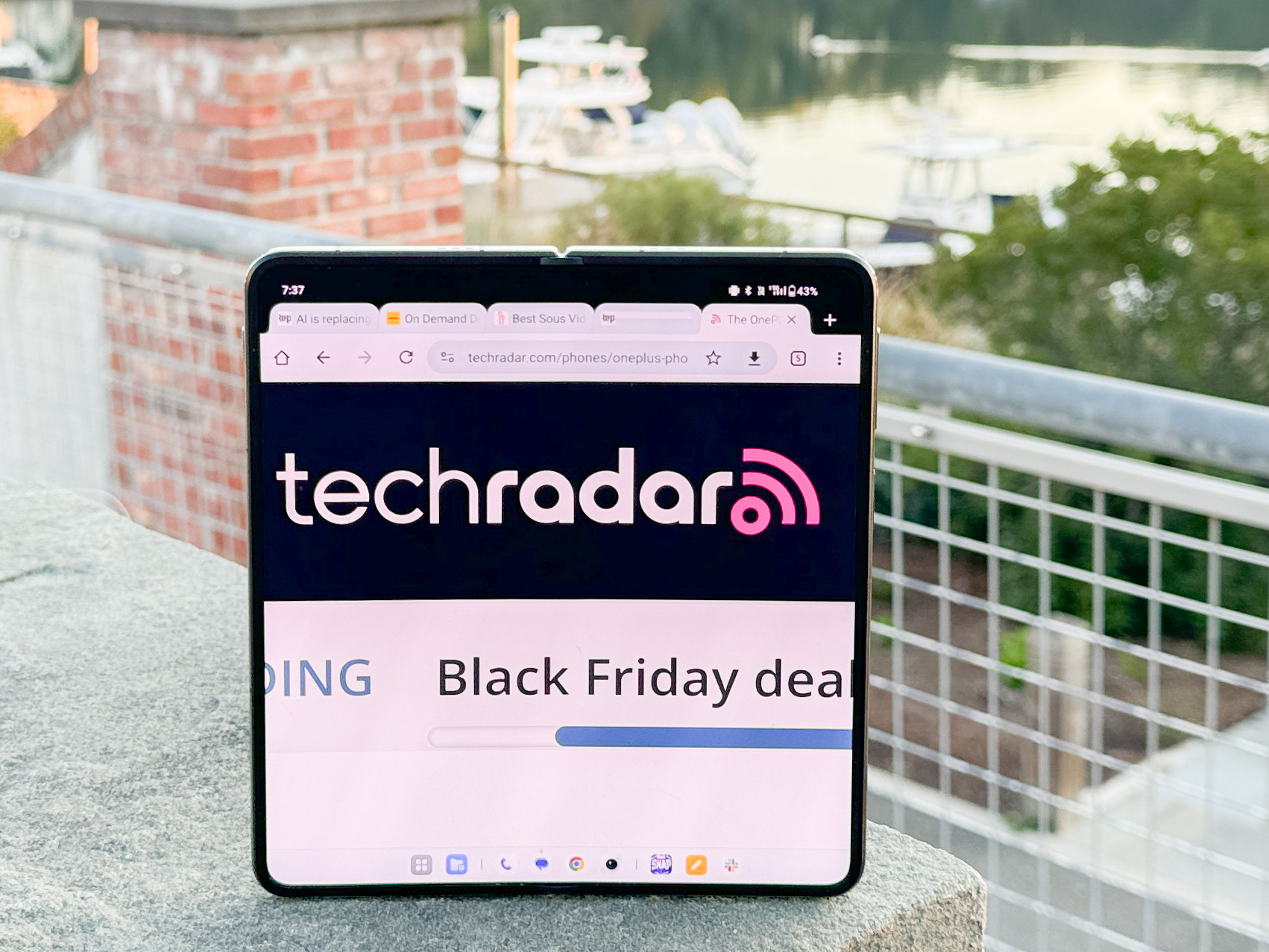
The iPhone 15 Pro can only charge at under 30W, and more power definitely means faster charge times. You can easily charge the OnePlus Open to full in around 30 minutes.
Sadly, there are no wireless charging features on the OnePlus Open. For some buyers this isn’t a big deal, but for other folks this is a total dealbreaker. I get it – you’ve grown accustomed to your wireless lifestyle. You charge your phone in your car and on the many expensive charging pads you’ve purchased. Sorry, we told OnePlus this was important, but they wanted to save space (and probably some money, too).
- Battery score: 3 / 5
Should you buy the OnePlus Open?
Buy it if...
Don't buy it if...
OnePlus Open review: Also consider
If you’re not convinced that the OnePlus Open is the right tablet foldable for you, or you want to check out a phone that does a little more, here are some options:
How I tested the OnePlus Open
OnePlus invited me to a day-long summit to learn about the OnePlus Open, and I left with a review unit. We had an opportunity to take photos around New York City, but in the weeks since I received the device OnePlus has updated the software multiple times, especially the image processing.
Photos have definitely improved since I received my review phone, but OnePlus told me to expect another software update before this review was published which didn't materialize. It’s therefore possible that image quality may change and improve, in which case I will revisit this review (and remove this paragraph).
I used the OnePlus Open as my primary work phone during my review period, so I used it for all of my work communications, scheduling, and calls, especially video calls on the go. I listened to music and played games with the phone as well.
I tested the camera using mostly the primary photo and video modes, with some venturing into the other camera modes. I used the camera during the day and at night, at home and while traveling, and for sharing as well as scanning documents.
I used benchmarking software to compare the OnePlus Open to other phones I've tested, but I report my experience in real-world usage terms and not benchmark results. For battery testing, I drained the phone as much as possible and recorded my battery percentage at the end of the day, as well as my screen time and other usage notes.
I tested the OnePlus Open with a variety of accessories, as well as with the Android Auto system on my Honda. I used it with many of this year’s OnePlus devices, including the OnePlus Buds Pro 2 and the OnePlus Pad, as well as Google Pixel Buds Pro, an Xbox game controller, and other audio accessories. Read more about how we test
First reviewed October 2023







